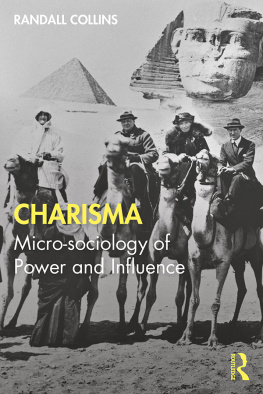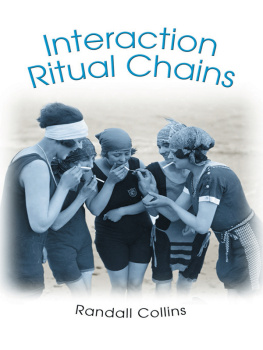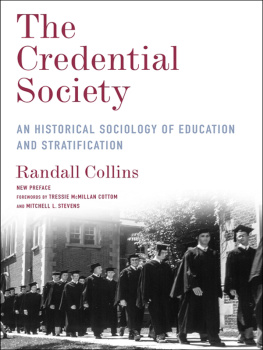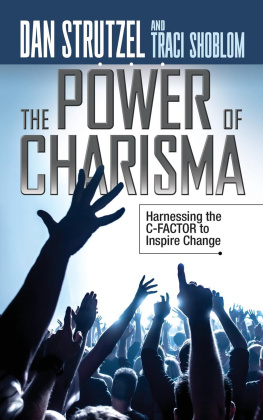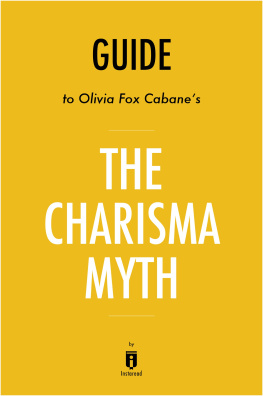Contents
Guide
Print Page Numbers

Charisma
What is charisma? And how does it generate influence and power? World-renowned sociologist Randall Collins explores these and many other questions in a highly readable exploration of the various forms of charisma and how charisma elevated Jesus, Cleopatra, Lawrence of Arabia, Queen Elizabeth, Hitler, Churchill, Franklin and Eleanor Roosevelt, Madame Mao Zedong, and others. He explores four types of charisma: frontstage, backstage, success-magic, and reputational charisma. Not everyone has the same kind of charisma and Collins identifies important differences and their relations to power. The book exemplifies Collinss sophisticated micro-sociology in accessible and compelling prose, quietly building subtle matrices of analysis that show how sociology unveils hidden discoveries.
Randall Collins, Professor of Sociology Emeritus at the University of Pennsylvania, is a world-renowned sociologist. Among his recent books is Violence: A Micro-sociological Theory.
Charisma
Micro-sociology of Power and Influence
Randall Collins

First published 2020
by Routledge
52 Vanderbilt Avenue, New York, NY 10017
and by Routledge
2 Park Square, Milton Park, Abingdon, Oxon, OX14 4RN
Routledge is an imprint of the Taylor & Francis Group, an informa business
2020 Taylor & Francis
The right of Randall Collins to be identified as author of this work has been asserted by him in accordance with sections 77 and 78 of the Copyright, Designs and Patents Act 1988.
All rights reserved. No part of this book may be reprinted or reproduced or utilized in any form or by any electronic, mechanical, or other means, now known or hereafter invented, including photocopying and recording, or in any information storage or retrieval system, without permission in writing from the publishers.
Trademark notice: Product or corporate names may be trademarks or registered trademarks, and are used only for identification and explanation without intent to infringe.
Library of Congress Cataloging-in-Publication Data
A catalog record for this title has been requested
ISBN: 978-0-367-37359-7 (hbk)
ISBN: 978-0-367-37358-0 (pbk)
ISBN: 978-0-429-35331-4 (ebk)
Typeset in Bembo
by Wearset Ltd, Boldon, Tyne and Wear
Contents
Charisma is a sociological term that went viral.
Originally it was made famous among sociologists by Max Weber. Its roots are in a Greek word meaning gifti.e. a gift from Godused in early Christianity. Weber argued that charisma is the force that breaks history out of its rut, breaking the inertia of tradition and moving history in a new direction. According to Weber, founders of the world religions have generally been charismaticJesus, Muhammad, the Buddha. So have the builders of empires and creators of new kinds of states, from Alexander the Great to Napoleon.
In popular usage today, the term has been watered down. Charismatic is used for religious cult leaders, populist politicians, entertainers, sports stars, even just people who dress stylishly or over-the-top. In the business world, since the success of Steve Jobs with Apple, there has been a deliberate effort to make every CEO charismatic, in staged product launches and media-broadcast appearances.
This is over-doing it. We can check whether the term makes sense by asking if it fits Webers point: has this person really changed history, setting it off in new directions? If not, charisma is just hyperbole (AKA hype), trendy rhetoric, exaggerating someones importance.
Still, it can be useful to think of charisma as a continuum. Some people are semi-charismatic, having charisma in some ways but not in others. Instead of using the word to gush about people, we can use it as a sociological research project, distinguishing different ingredients of charisma and showing how they workand sometimes how they fail.
The plan of this book is to look at persons with high levels of charisma, to see how they did it. Putting the person into their surrounding context: how it happened, when charisma popped up, and how long it lasted.
I will mainly use two sociological tools: micro-sociology, and social networks.
Micro-sociology is associated especially with Erving Goffman and his followers. It concentrates on how individuals interact with each other, above all face-to-face. Sociologists and other social scientists have gotten progressively better at this, by looking closely at the details. By recording conversations and playing them back carefully, we can see whether conversations are in rhythm or not (people are in synch with each other, or out of synch); who gets the speaking turns; who sets the rhythm and who follows. By analyzing photos of faces and body postures, we have learned how to read emotions; we can see when people are confident or tense, anxious or depressed, angry or sad, and whether smiles are fake or genuine. In face-to-face interactions, we can discern who sets the mood, who is emotionally dominant, and when people emotionally clash.
This research has flourished in our contemporary era, where photos have been supplemented by videos posted on the Internet. How can it help us for earlier periods, going back into history to examine charismatic persons before there was any such thing as photos? As we will see in examining the interactional styles of Jesus, Cleopatra, and Joan of Arc, there are often good descriptions of the details of how they interacted with people. Modern micro-sociology makes us alert as to what kind of details to look for, the rhythms of their talk, the emotions they express that spread contagiously to other people. Micro-sociology works well where we have photos and videos. But it also sharpens our vision, for whatever we see around us, and gives us a direction when reading about historic figures.
The second tool is analyzing social networks. This means something more than networks on the Internet, or counting how many friends we have on Facebook. The most intense interactions happen face-to-face, in full bodily presence; this is important because emotions and rhythms are transmitted in many dimensions, not only the words that are spoken and the expressions you consciously try to put on your face. Not to say that Internet-mediated connections cant have some influence, but what we know about the micro-sociology of charisma is about close face-to-face interactions. Possibly someone might become charismatic over the Internet or whatever replaces it in the future, but it hasnt happened yet. Steve Jobs, who did more than anyone to make the Internet ubiquitous in everyones life, always wanted to meet people face-to-face: that is how he exerted his influence. (Once you understand the theory of charisma, as we have it so far, it would be interesting to develop a new theory of how non-face-to-face charisma might be created.)
Social network analysis, as practiced by sociologists, collects information about who interacts with whom over and over again, in ties that range from strong and intense, to weak and casual. Once we get a picture of such networks, we can see who is near the center or on the edges, who is isolated, and who is a bridge from one network to another. Networks change over time; it isnt enough to just count how many network ties someone has. Charismatic persons build networks: they attract followers (who may themselves be isolates or densely networkedwhich makes a difference); they create connections to people who become their allies, or their rivals, or enemies. In other words, their micro-behavior has an important effect on whether they can build networks, and what kind of relationships they make. (We will see a lot of this when we examine how Lawrence of Arabia, and Marilyn Monroe, built their networks. Neither of them just sat back and let networks come to them.)

